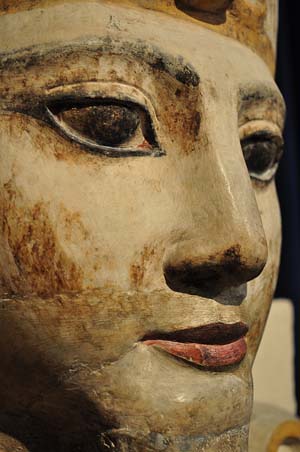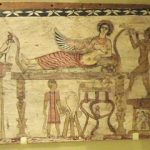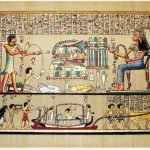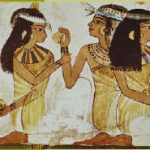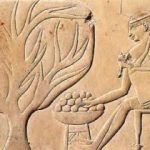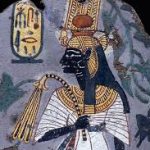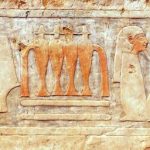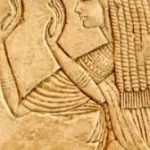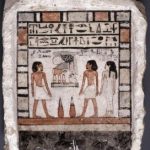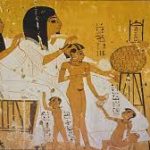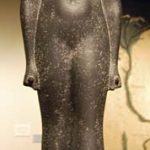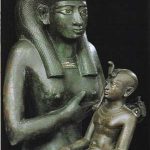The literature of Ancient Egypt did not hesitate to present women as frivolous, capricious, and rarely trustworthy. But despite this, women benefitted from a status that was rare in the civilizations of the time.
While the painters and sculptors gave to women a serene image as part of a happy family, the writers were not tender, and they portrayed women as being the origin of misfortune and guilty of many sins (where one can see a form of the myth of Eve and the apple, or Pandora).
As Gaston Maspero describes in Contes populaires (Popular Tales), there was the fatal misadventure of Bytaou, the humble farmhand at the home of his brother Anoupou. Seduced by the wife of his brother, he succumbs to the charm of her beauty. She does not hesitate to denounce him to Anoupou, lying and never ceasing until she obtains the ultimate punishment for Bytaou at the hands of Anoupou. But she is punished in turn; Anoupou discovers much later that he has been played for a fool by his wife, who he kills, and throws her body to the dogs.
It is important not to interpret this incorrectly: the rarely flattering portrayal of women in Egyptian literature does not reveal for nothing that women were despised. The Pharaoh was often given the same treatment by storytellers who presented the Pharoah as a stubborn and whimsical character.
Men were invited to cherish their wives. Ptahhotep – an ancient Egyptian official during the late 25th century BC and early 24th century BC- expressed this in the following maxim (written in the Papyrus Prisse): “You must love your wife with all your heart … make her heart happy as long as you live”.
- The Prisse Papyrus, dating from the twelfth dynasty Egyptian Middle Kingdom was obtained by the French orientalist Emile Prisse d’Avennes at Thebes in 1856 and is now in the Bibliotheque nationale de France in Paris. The papyrus document contains the last two pages of the Instructions of Kagemni, who purportedly served under the 4th Dynasty king Snofru, and is a compilation of moral maxims and admonitions on the practice of virtue. The conclusion of the Instructions of Kagemni is followed by the only complete surviving copy of the Instruction of Ptahhotep.

